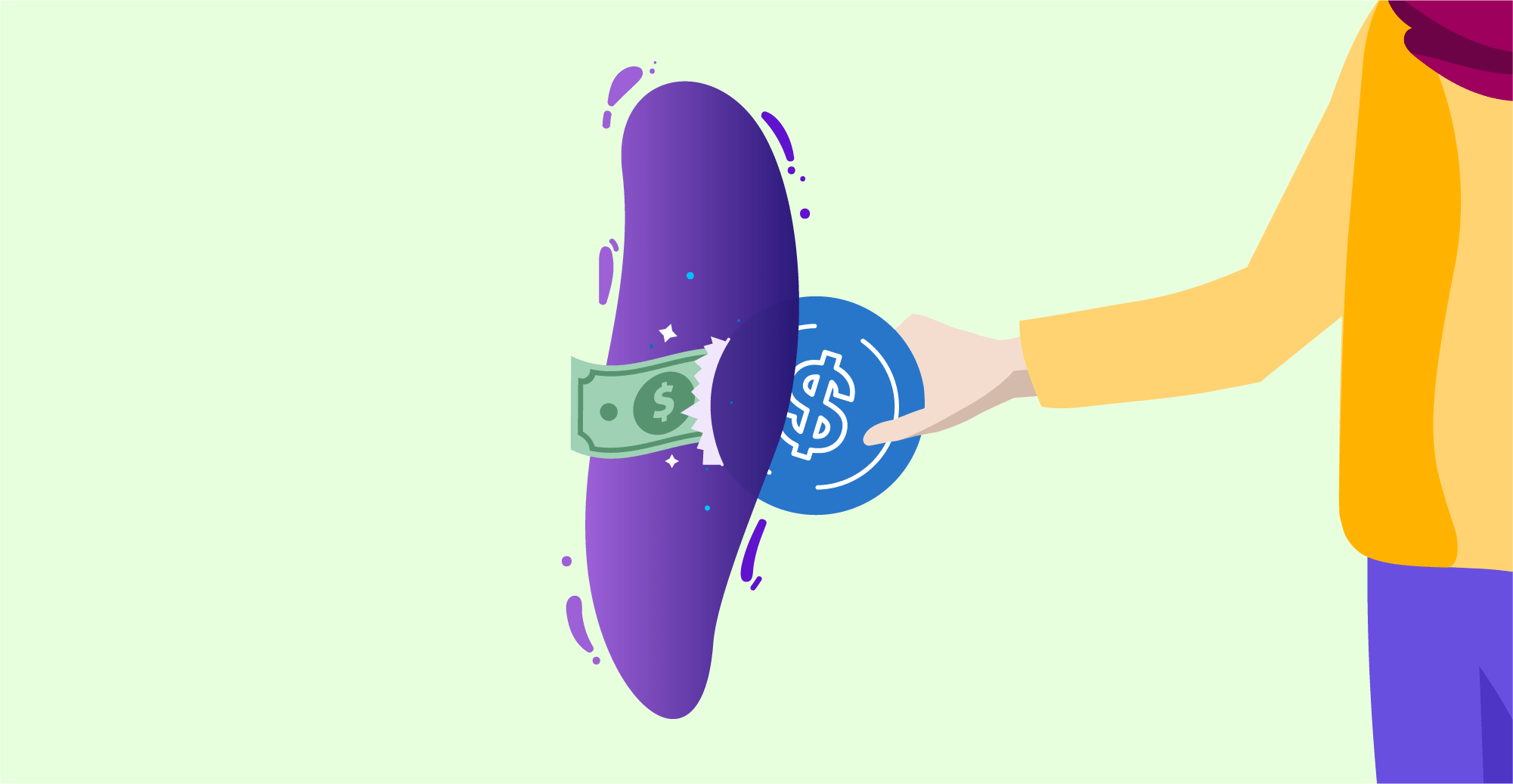What are stable cryptocurrencies and what are they for? What are its features and advantages. The most popular stablecoins: DAI, USD Coin and USD Tether.

Stablecoins or stable cryptocurrencies are a type of digital asset whose value is linked to that of another asset through a peg relationship.
The most popular stablecoins maintain a 1:1 relationship with the US dollar, while others do so with gold or even other cryptocurrencies.
The first stable crypto was Tether (USDT), created by the company Tether Limited. It went on the market in October 2014 and until 2018 it was the only one of its kind, which allowed it to dominate the entire segment. Then DAI, from the MakerDAO project, and also USD Coin (USDC) appeared, showing signs of the consolidation of the use of this type of “cryptodollars”.

Stablecoins generally maintain their 1-to-1 peg to the US dollar.
Advantages of stablecoins
By always being worth the same, they eliminate the volatility typical of other cryptocurrencies.
They keep the purchasing power of their users constant and predictable, without the need to use foreign currency.
They are a value transfer mechanism without geographical borders and with low commissions.
Most platforms and exchanges accept them to exchange for fiat money or other cryptocurrencies.
They are very useful for users who trade, and one of the assets that usually gives the best performance for staking.
The most popular stablecoins
Among the most used stablecoins are USDT, DAI and USDC, and each has a different way of maintaining its stability.
USD Tether is a stablecoin that depends on the company Tether Ltd, therefore it is a centralized stablecoin. It works on the Bitcoin blockchain based on the Omni Layer protocol, and has equivalent reserves in fiat currency.
DAI is a decentralized stablecoin, but supported by the Maker Foundation and coordinated by its DAO. It works on the Ethereum blockchain, with a smart contract that regulates the amount of DAI available to maintain its peg to the dollar.
USD Coin emerged from the Coinbase exchange and Circle, a p2p (peer-to-peer) payments tool, but has constant, external auditing that monitors the dollar reserves that support the value of the token.
Types of stablecoins
Stablecoins at parity with fiat currencies or other types of assets. The DAI model, from Maker DAO. The USDC model, from Coinbase and Circle.

Stable cryptocurrencies can be divided into two types: some are tied to fiat currencies (issued by states) and others are pegged to other assets, such as gold, stocks and other cryptocurrencies.
On our web platform and our app you will be able to find both DAI, USDT and USDC. Although their usefulness is practically the same as stablecoins, each one has different characteristics.
In addition, there are others, with parity with other types of assets. For example, PAX Gold, whose token remains paired with the ounce of gold.

There are two main models of stablecoins, depending on whether they are linked to the price of fiat money or other assets.
The DAI model
While it maintains its one-to-one peg with the US currency, DAI is not backed by dollars but by another cryptocurrency: when someone wants to create a DAI, they have to leave another token as collateral, usually ETH, Ethereum’s cryptocurrency.
Stablecoins backed by other cryptoassets, such as DAI, are known as collateralized stablecoins.
DAI works with several mechanisms that balance its supply and demand so that it is always worth one US dollar.
This happens through a smart contract that runs on the Ethereum blockchain, which allows it to work automatically and decentralized.
In the event of marked market instability, the smart contract activates a so-called feedback mechanism.
When the price drops below one dollar, a rate is created that rewards those who hold DAI and discourages the creation of new ones. On the contrary, when the price rises, the creation of new DAI is incentivized through a drop in the rate.
The USDC model
In the USD Coin model, for every USDC issued there is one dollar in a reserve bank account, and the proposal is that that parity will always be maintained.
This token, unlike DAI, requires confidence that the number of dollars in the reserve corresponds to the number of circulating tokens.
To sustain that trust, the Center consortium (Coinbase and Circle, the companies that power USDC) hired external auditors who are responsible for verifying that the token sums match the reserves.
The USDT model
As for the Tether Ltd stablecoin, also for every USDT issued there is a dollar backed in a reserve bank account, and also with the promise of permanent peg.
USD Tether is also a centralized project, which at different times in its history has been exposed to transparency issues.
That hasn’t changed the fact that, since its creation, USDT remains the leading stablecoin on the market.
A brief history
Why stablecoins appeared. USD Tether, the first case. Maker’s answer with DAI. USD Coin as an overcoming model.


Stablecoins seek to solve problems of cryptocurrencies such as their volatility and poor predictability.
Brief history of stablecoins
In 2014, USD Tether emerged, with the idea of creating a digital currency with all the advantages of a cryptocurrency but without its volatility.
To do this, the company Tether Limited proposed that for every USDT available there would be one dollar deposited in a backup bank account.
But this had a fundamental problem: it required the trust of users in a company, precisely when one of the bases of cryptocurrencies is to eliminate the need to centralize trust, computing power or information in a third party.
This model was the only one available for four years, and was the subject of some controversies.
As a result of this, the need for a decentralized stablecoin gained ground, and Maker promoted DAI, a more technical and complex project, but which achieved its objective and also generated a growing community of developments.
Finally, the appearance of USD Coin took up the idea of Tether but with an extra guarantee: a permanent external audit.

